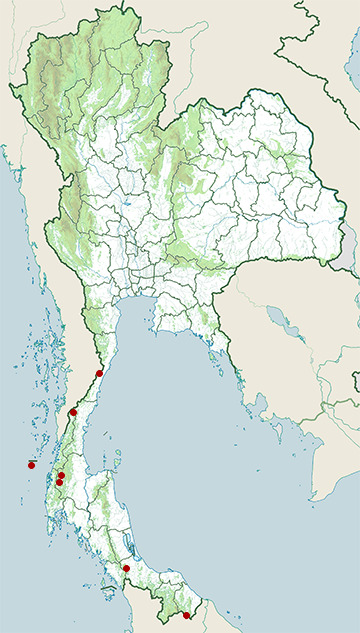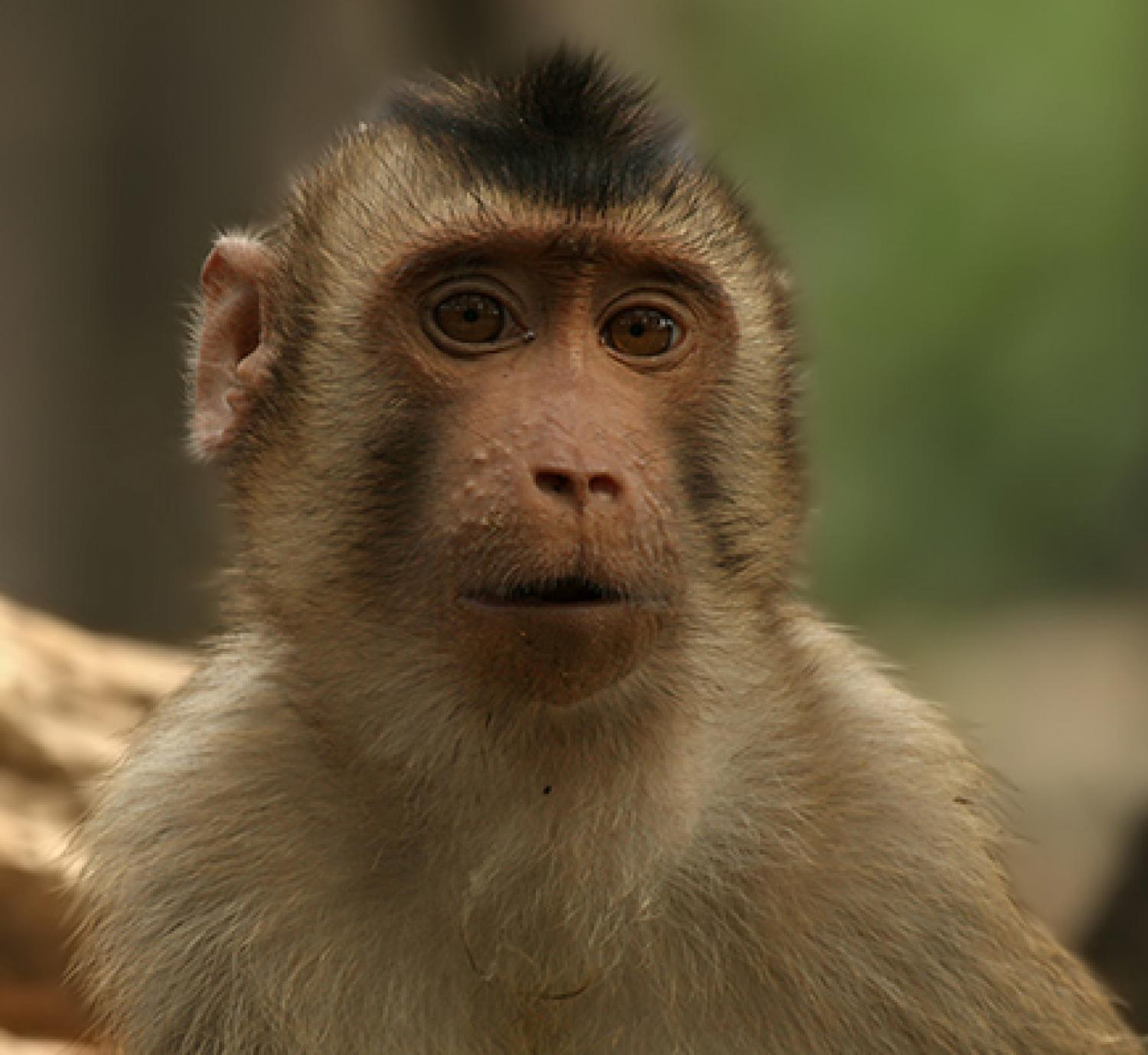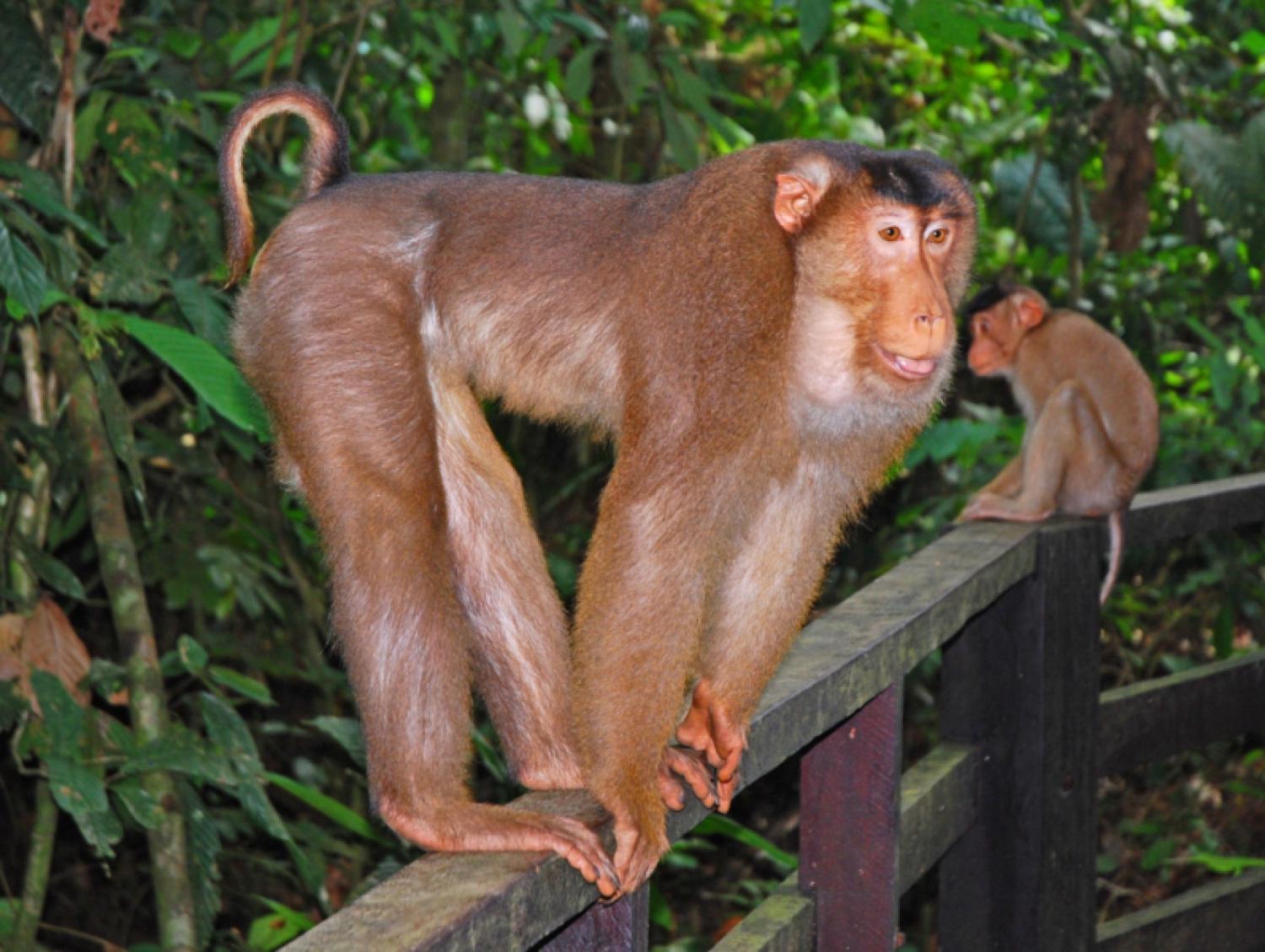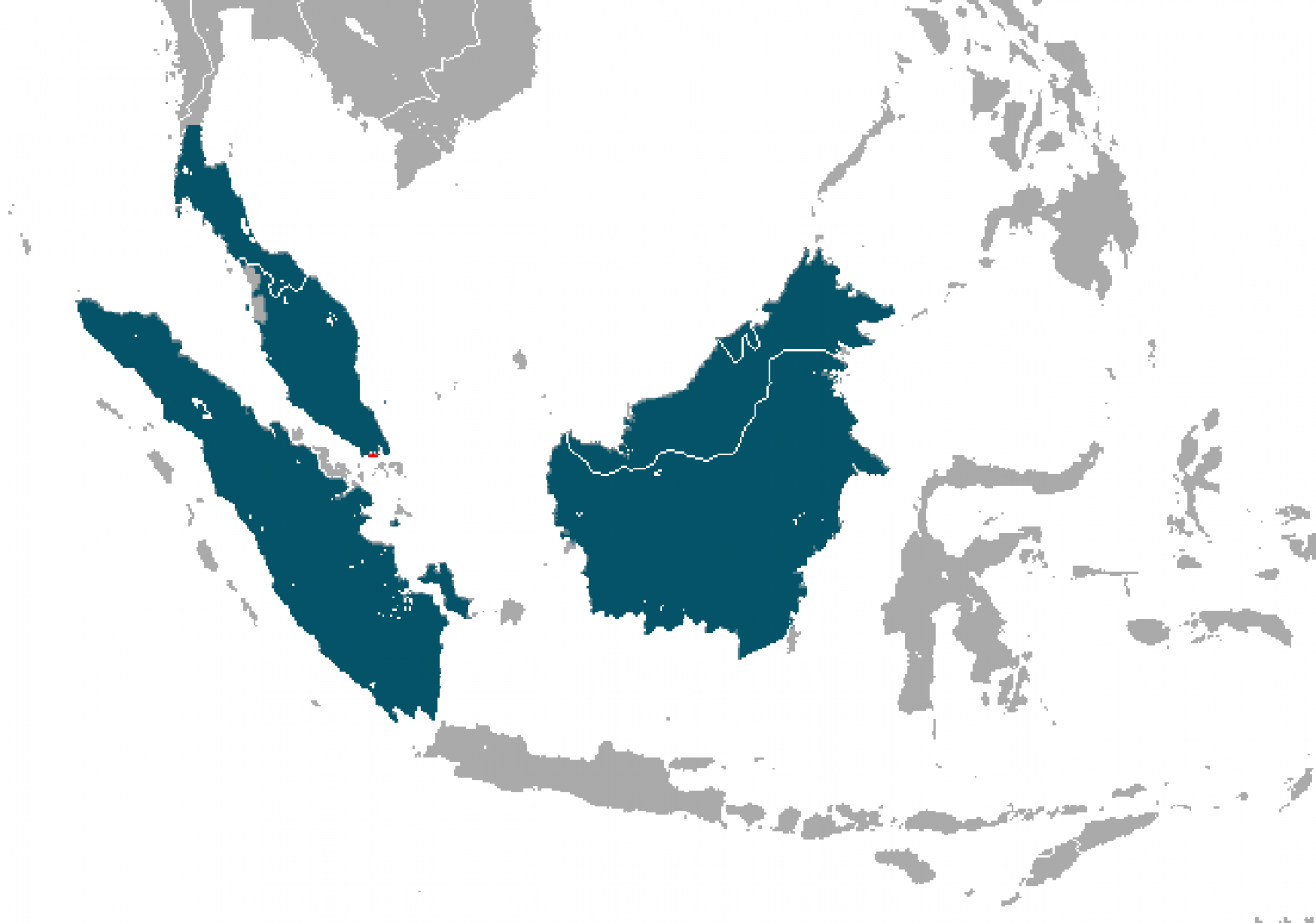Species of Thailand
Southern pig-tailed macaque
Macaca nemestrina
(Carolus Linnaeus, 1766)
In Thai: ลิงกัง
The southern pig-tailed macaque (Macaca nemestrina), also known as the Sundaland pig-tailed macaque and the Sunda pig-tailed macaque, is a medium-sized macaque that lives in Sundaland, southern Thailand, Malaysia, and Indonesia. It is known locally as beruk.
Etymology and taxonomy
The species epithet, nemestrina, is an adjective (derived from Latin , meaning "the god of groves") modified to agree in gender with the feminine generic name. M. nemestrina formerly included the northern pig-tailed, Pagai Island, and Siberut macaques as subspecies. All four are now considered separate species.
In the 19th century, bruh was the native name used by Malays in Sumatra for the macaque.
Description
As with other Macaca species, males are larger than females; while males are measured at 50 - 58 cm in length and 5 - 12 kg in weight, females are measured at 38 - 48 cm in length and 4.5 - 6 kg in weight. This macaque has buff-brown fur, with a darker dorsal area and lighter ventral area. Its common name refers to the short tail held semi-erect, resembling the tail of a pig.
Behaviour and ecology
M. nemestrina is mainly terrestrial, but also a skilled climber. Unlike almost all primates, these macaques love water. They live in large groups that split into smaller groups during daytime when they are foraging. They are omnivorous, feeding mainly on fruits, seeds, berries, cereals, fungi, and invertebrates. A study in peninsular Malaysia found them to be the primary, and perhaps the only, seed dispersers of the rattan species Calamus calicarpus (syn. Daemonorops calicarpa) and Calamus castaneus.
There is a hierarchy among males, based on strength, and among females, based on heredity. Thus, the daughter of the alpha female will immediately be placed above all other females in the group. The alpha female leads the group, while the male role is more to manage conflict within the group and to defend it.
Female gestation lasts around 5.7 months. She will give birth to one infant every two years. Weaning occurs at 4–5 months. Sexual maturity is reached at 3–5 years.
In Thailand, they have been trained for 400 years to harvest coconuts.
Habitat and distribution
This macaque is mostly found in rainforest up to 2000 m, but will also enter plantations and gardens.
It is found in the southern half of the Malay Peninsula (only just extending into southernmost Thailand), Borneo, Sumatra and Bangka Island. There are reports of the species having been present in Singapore before 1950, but these were likely escaped pets. The only pig-tailed macaques in Singapore today are introduced monkeys.
Interaction with humans
Since the 19th century, monkeys including the southern pig-tailed macaque, have been used by humans to harvest coconuts in southeast Asia.
This article uses material from Wikipedia released under the Creative Commons Attribution-Share-Alike Licence 3.0. Eventual photos shown in this page may or may not be from Wikipedia, please see the license details for photos in photo by-lines.
Scientific classification
- Kingdom
- Animalia
- Phylum
- Chordata
- Class
- Mammalia
- Order
- Primates
- Family
- Cercopithecidae
- Genus
- Macaca
- Species
- Macaca nemestrina
Common names
- German: Südliche Schweinsaffe
- English:
- Pig-tailed macaque
- Sunda pig-tailed macaque
- Sundaland pig-tailed macaque
- Pigtail macaque
- Southern pig-tailed macaque
- Sundaland pigtail macaque
- Spanish:
- Macaca cola de cerdo
- Macaco cola de cerdo sureño
- French:
- Macaque à queue de cochon
- Macaque à queue de cochon des îles de la Sonde
- Italian: Macaco nemestrino
- Dutch:
- Lampongaap
- Laponderaap
- Swedish: Svinmakak
- Thai:
- ลิงกัง
- ลิงกังใต้
Synonyms
- Macaca nucifera, Henri Jacob Victor Sody (1936)
- Macaca broca, Gerrit Smith Miller, Jr (1906)
- Macaca brachyurus, Charles Hamilton Smith (1842)
- Macaca maimon, Henri Marie Ducrotay de Blainville (1839)
- Macaca libidinosus, Isidore Geoffroy Saint-Hilaire (1826)
- Macaca carpolegus, Thomas Stamford Raffles (1821)
- Macaca fusca, George Shaw (1800)
- Macaca longicruris, Johann Heinrich Friedrich Link (1795)
- Macaca platypygos, Johann Christian Daniel von Schreber (1774)
Conservation status

Endangered (IUCN3.1)
Photos
Please help us review our species pages if wrong photos are used or any other details in the page is wrong. We can be reached via our contact us page.
Range Map

- Hala-Bala Wildlife Sanctuary
- Khao Luang National Park
- Sadeth Naikrom - Krom Luang Wildlife Sanctuary
- Ton Nga-Chang Wildlife Sanctuary


